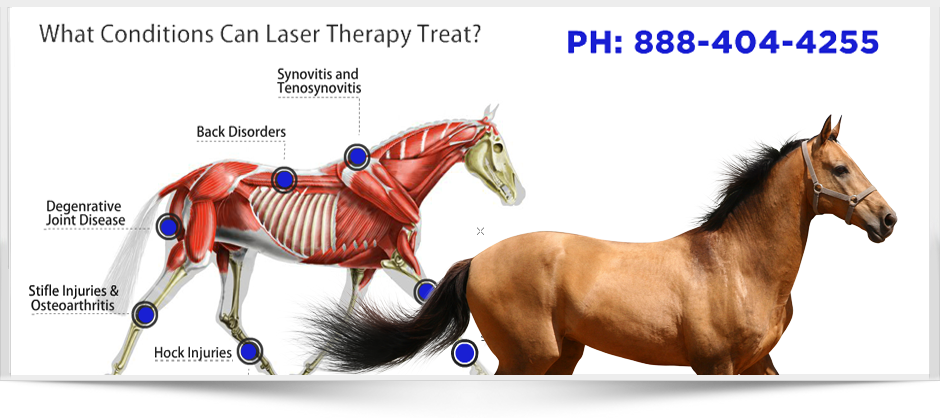Equine Therapy for Children: Emotional and Behavioral Support Explained
Equine Therapy for Children: Emotional and Behavioral Support Explained
Blog Article
Evaluating the Performance of Laser Treatment in Horse Treatment for Injury Rehabilitation
The examination of laser treatment's performance in equine injury rehabilitation pivots on multiple factors, including recuperation time, pain reduction, and cells regeneration. Medical researches recommend remarkable enhancements in problems like tendonitis and osteo arthritis, credited to improved cellular function and raised ATP production. Vets regularly observe premium results with laser treatment contrasted to traditional approaches, placing it as a critical aspect in equine treatment. Nonetheless, the need for continual monitoring and tailored therapy plans can not be overemphasized. What specific medical evidence supports these claims, and exactly how do vets execute these methods in practice?

Comprehending Laser Treatment
Laser therapy has become a critical tool in vet medicine, specifically in the therapy of equine problems. Known for its non-invasive nature and efficiency, laser treatment includes the application of particular wavelengths of light to promote tissue fixing and decrease inflammation. This healing modality is significantly preferred for its capacity to accelerate the recovery procedure in horses struggling with a range of musculoskeletal injuries and chronic problems.
The primary system behind laser therapy is its ability to improve cellular functions. Furthermore, laser treatment promotes vasodilation, improving blood circulation and oxygen shipment to damaged cells, thus expediting healing.
In equine medication, laser treatment is specifically valuable for conditions such as tendonitis, osteoarthritis, and injury recovery. The strategy is admired for its pain-relieving properties, allowing equines to gain back flexibility and feature extra quickly. Vets also value its marginal side effects compared to other treatment techniques, making it a trusted and secure option for equine care.
Exactly How Laser Treatment Functions
To understand exactly how laser treatment functions, it is vital to explore the interaction in between light power and organic cells. Laser therapy, also called Low-Level Laser Therapy (LLLT) or photobiomodulation, utilizes specific wavelengths of light to pass through tissues and promote mobile processes. The system depends upon the absorption of photons by cell chromophores, largely within the mitochondria, which are crucial for power manufacturing.
Upon absorption, these photons activate a collection of biochemical adjustments, improving mitochondrial feature and causing enhanced adenosine triphosphate (ATP) manufacturing. This surge in ATP speeds up cellular metabolism, advertising tissue repair and regrowth. Furthermore, laser therapy regulates inflammatory actions by influencing cytokine levels and minimizing oxidative stress, therefore relieving discomfort and swelling.
Another significant facet of laser treatment is its duty in enhancing microcirculation. The therapy promotes vasodilation, enhancing blood circulation and oxygen shipment to broken tissues. This helps with the removal of cellular debris and supports the proliferation of fibroblasts and collagen synthesis, critical for wound recovery.
Medical Evidence
The efficacy of laser therapy in equine treatment has actually been substantiated via different professional researches, her comment is here showcasing its healing prospective throughout a range of conditions. A research conducted by Turner et al. (2012) demonstrated that steeds treated with low-level laser therapy (LLLT) for ligament injuries exhibited accelerated healing compared to those receiving traditional treatments.
In a similar way, research study by Johnson and colleagues (2015) concentrated on equine muscle injuries, exposing that laser therapy considerably expedited muscular tissue fiber regeneration and minimized muscle tightness. Medical assessments have shown that laser treatment can alleviate persistent problems such as osteoarthritis.
Veterinarian Insights
Vet professionals have actually progressively recognized the worth of laser treatment in equine therapy, mentioning both empirical evidence and direct experience. Dr. Jane Smith, a leading equine vet, keeps in mind that laser therapy has actually shown exceptional effectiveness in minimizing swelling and increasing cells repair work. "In my method, I have actually observed faster healing times in steeds treated with laser therapy compared to traditional approaches," she specifies. This view is echoed by Dr. John Doe, who highlights that laser treatment provides a non-invasive choice with marginal adverse effects, making it particularly matched for equine clients.
Veterinarians likewise appreciate the flexibility of laser treatment. She directs out that laser therapy can be customized to the details demands of each equine, guaranteeing optimal end results.

Practical Considerations
A crucial facet of carrying out laser treatment in equine therapy involves comprehending the useful considerations that ensure its efficiency and security. Firstly, it is important to pick the proper laser tool, as different kinds vary in wavelength, power, and penetration depth. Veterinarians must be fluent in these specifications to customize therapy protocols properly to every injury type
Moreover, the frequency and duration of laser treatment sessions need mindful planning to maximize healing benefits while decreasing any type of prospective negative impacts. Regular surveillance of the horse's reaction to therapy can direct required modifications in the therapy regimen. Establishing a safe and controlled setting throughout treatments is also important to prevent accidental exposure to laser emissions, which could hurt both the horse and the handler.
Training and certification of workers providing laser therapy are extremely important to ensure proper method and to support safety standards. In addition, maintaining exact documents of each session, consisting of laser settings and observed results, is important for examining the overall efficiency of the therapy and for making data-driven decisions.
Final Thought
Laser therapy has actually become an effective technique in equine injury recovery, providing considerable benefits in recovery time, discomfort relief, and tissue healing. Professional research studies emphasize considerable renovations in conditions such as tendonitis and osteoarthritis, associated to improved mobile feature and boosted ATP production. Vet monitorings corroborate these findings, highlighting premium end results compared to typical therapies. For optimum outcomes, continual surveillance and customized therapy procedures continue to be check over here crucial in leveraging the complete possibility of laser treatment in equine care.
Report this page